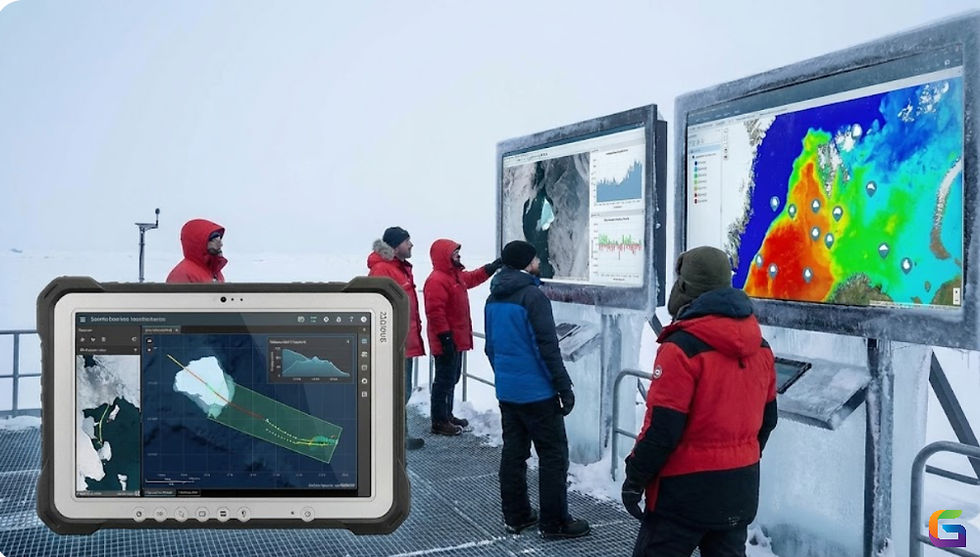KML 101: What a KML File Is and When to Use It
- Anvita Shrivastava

- Sep 17
- 3 min read
KML (Keyhole Markup Language) is one of the most commonly utilized formats for depicting geographic information within the domain of geospatial data and GIS (Geographic Information Systems). KML, initially created by Keyhole Inc. (later acquired by Google), has become a standardized XML-based format approved by the Open Geospatial Consortium (OGC). It is essential for visualizing geospatial data on platforms such as Google Earth, Google Maps, and various GIS applications.

What Is a KML File?
KML files, which are based on XML, serve the purpose of keeping geographic annotations and visualization elements. KML focuses on presentation and interaction, in contrast to raw spatial data formats like Shapefiles or GeoTIFFs.
The essential elements of a KML file comprise:
Placemarks – Points, lines, or shapes indicating positions on a map.
Styles and Icons – Personalization of map elements (color, thickness, transparency, labels, icons).
Overlays – Raster images placed over map surfaces.
Network Links – Dynamic connections to external KML/KMZ files that allow for real-time updates.
Time Elements – Incorporation of temporal data for animations and historical investigations.
KML's adherence to XML syntax enables it to be both machine-readable and human-readable. This characteristic makes it suitable for both technical GIS processing and visual presentation.
KML vs. KMZ
KMZ files are frequently encountered; these are KML files that have been compressed (zipped). External resources like images, 3D models, or icons can also be included in a KMZ. KMZ is particularly beneficial for sharing large datasets without creating unwieldy file sizes.
Advantages of Using KML
Interoperability: Facilitated by Google Earth, QGIS, ArcGIS, Cesium, and various other tools that comply with OGC standards.
Driven by Visualization: Ideal for demos, presentations, or intuitive storytelling using map visuals.
Web-Ready: Can be easily integrated into web mapping services or viewed directly in browsers using mapping APIs.
Open Standard: Supported by the OGC, guaranteeing durability and cross-platform compatibility.
When to Use KML Files
Although KML may not always be the best option for extensive geospatial analysis, it performs exceptionally well in certain situations:
Data Representation and Dissemination
Perfect for displaying GIS analysis outcomes in a user-friendly format.
Commonly utilized for tourism maps, disaster response dashboards, and project presentations.
Incorporation with Google Earth and Maps
Ideal for when your audience depends on Google Earth for 3D exploration or Google Maps for online visualization.
Lightweight Distribution of Geospatial Data
Compared to complex formats such as Shapefiles, KML is smaller and more portable.
Handy for sharing with people who are not GIS professionals.
Dynamic and Time-Capable Data
Appropriate for datasets that include temporal elements (such as tracking hurricanes, vehicle movement, or construction progress).
Superimposing tailored layers
Useful for layering raster images, CAD drawings, or 3D models onto base maps.
Limitations of KML
KML is versatile, but it does have limitations:
Performance Issues: Working with datasets that exceed 10MB can result in delays in rendering.
Analysis Constraints: Not suitable for advanced geospatial analysis (use formats such as GeoPackage or PostGIS instead).
Projection Support: Mainly associated with the WGS84 geographic coordinate system (EPSG:4326).
Tools and Software Supporting KML
Google Earth Pro – KML/KMZ formats are handled and visualized natively.
QGIS – Open-source GIS application that fully supports KML import and export.
ArcGIS Pro – Facilitates the conversion of KML into other GIS formats for more in-depth analysis.
CesiumJS / Leaflet – Bibliothèques de cartographie web qui prennent en charge les couches KML.
Best Practices for Working with KML
Manage file sizes to prevent performance problems.
Utilize KMZ to distribute images and sizable assets.
Check the XML syntax for validity, so as to make certain that it works with all tools that comply with OGC.
Use WGS84 to ensure global interoperability.
A KML file serves as a link between geospatial data and user-friendly visualization. Although it is not a robust analytical format, it excels in communication, sharing, and interactive mapping. KML is still one of the most practical and universally supported options if your aim is to display geospatial information in an accessible, visually rich format across various platforms.
Whether you’re a GIS analyst working on a report, a developer incorporating custom map layers, or an educator instructing on geospatial concepts, grasping KML leads to more efficient workflows and enhanced audience interaction.
For more information or any questions regarding the KML File, please don't hesitate to contact us at
Email: info@geowgs84.com
USA (HQ): (720) 702–4849
(A GeoWGS84 Corp Company)




Comments